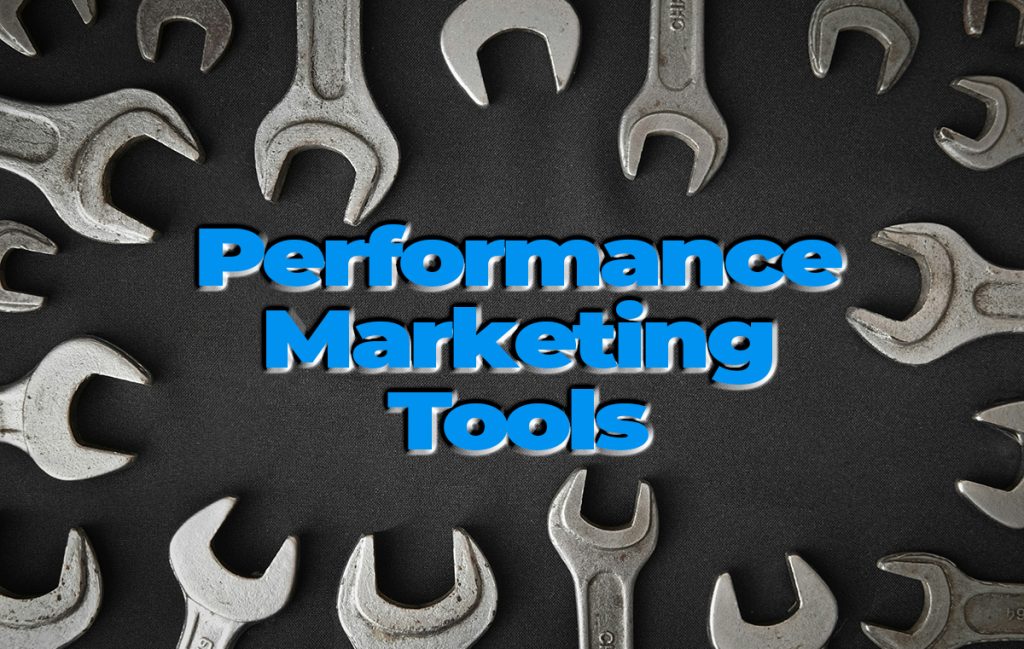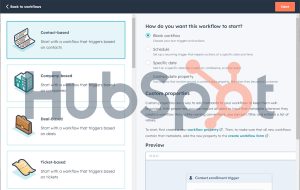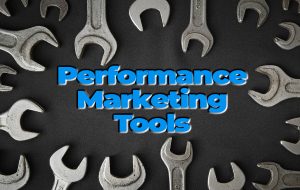The Best Performance Marketing Tools in 2024

The Best Performance Marketing Tools
Mastering performance marketing has never been more essential. Performance marketing is the strategy where advertisers pay for specific actions such as clicks, leads, or sales. It’s all about measurable results and return on investment (ROI). But to truly excel, having the right tools at your disposal is crucial.
Effective performance marketing tools help streamline campaign optimization, enhance targeting precision, and provide actionable insights from data. Whether you’re managing multiple campaigns or fine-tuning a single ad, the right software can significantly boost your efforts.
What is Performance Marketing?
Performance marketing is a digital advertising strategy where advertisers pay based on specific actions taken by users. This could be anything from clicks on an ad, to sign-ups for a newsletter, or actual purchases. Unlike traditional marketing that focuses on broader outreach and brand awareness, performance marketing zeroes in on measurable outcomes.
Differences from Traditional Marketing
While traditional marketing often aims to increase brand visibility and recognition, it doesn’t always provide clear metrics to gauge success. Think of a TV commercial; it boosts awareness but doesn’t directly track how many viewers end up making a purchase. Performance marketing flips that script. Here, every dollar spent is tied to a tangible result. This makes the ROI (Return on Investment) much clearer and helps marketers allocate budgets more effectively.
Key Components of Performance Marketing
Performance marketing is like a well-oiled machine composed of several interconnected parts. Here are the key components:
- Advertisers and Publishers: Advertisers are the brands looking to promote their products or services. Publishers, on the other hand, are the platforms or websites where these ads appear.
- Performance-Based Payments: Payments are made only when specific actions are completed. This could be a click, a lead, or a sale.
- Data and Analytics: Most performance marketing strategies heavily rely on data. Analytics help in tracking performance, identifying trends, and making data-driven decisions.
Benefits of Performance Marketing
There are several benefits that make performance marketing appealing for businesses of all sizes:
- Measurable Results: Every action can be tracked, which means you know exactly how your campaigns are performing.
- Cost-Effective: Because you only pay for desired actions, it can be more budget-friendly compared to traditional advertising.
- Targeted Advertising: Advanced targeting options allow you to reach the right audience based on demographics, behavior, and more.
How Does It Work?
Performance marketing follows a straightforward yet effective process. Here’s a breakdown:
- Setup: Advertisers create digital ads and choose their target audience.
- Placement: Ads are displayed on various platforms, whether it’s social media, search engines, or partner websites.
- Action: Users take a specific action prompted by the ad.
- Payment: Advertisers pay publishers based on the completed actions.
Understanding the nuances of performance marketing can be a game-changer. It’s a clear-cut, action-oriented approach that not only maximizes ad spend but also delivers quantifiable results.
Key Criteria for Choosing Performance Marketing Tools
Selecting the right performance marketing tools can make or break your digital campaigns. With countless options available, it’s crucial to know what to look for to ensure you invest in software that meets your needs. Here, we’ll discuss some essential factors to consider.
Usability
When choosing a performance marketing tool, ease of use should be a top priority. A tool that is user-friendly can save you time and prevent frustration. You’ll want to look for:
- Intuitive Interface: An easy-to-navigate dashboard.
- User Training: Availability of tutorials or onboarding sessions.
- Documentation and Support: Comprehensive help guides and responsive customer service.
These features ensure that even if you’re new to the tool, you can get up and running quickly without a steep learning curve.
Integration Capabilities
A good performance marketing tool should seamlessly integrate with your existing software and platforms. Integration capabilities are vital for streamlining your workflow and ensuring that data flows smoothly between different systems. Key integrations to consider include:
- CRM Systems: For efficient customer relationship management.
- Analytics Platforms: Such as Google Analytics for deeper insights.
- Ad Platforms: Like Facebook Ads or Google Ads for smoother ad management.
With these integrations, you can create a cohesive ecosystem where all your tools work in harmony.
Cost
Budget is always a consideration, but it’s important to balance cost with the features and benefits you’ll receive. Look for tools that offer a range of pricing plans to suit different budget levels. Key aspects to evaluate:
- Subscription Models: Monthly vs. annual plans.
- Free Trials: The ability to test the tool before committing.
- Hidden Costs: Be aware of any additional fees for extra features or add-ons.
By understanding the full cost, you can make a more informed decision that fits your financial constraints.
Scalability
As your business grows, your performance marketing needs will likely evolve. Therefore, it’s crucial to choose a tool that can scale with you. Consider:
- Feature Expansion: Ability to add advanced features as you need them.
- User Capacity: Options to increase the number of users or accounts.
- Data Handling: Capability to manage larger data sets.
A scalable tool ensures that you won’t outgrow your investment and can continue to meet your marketing goals effectively.
Data and Analytics
In performance marketing, data is king. The tool you choose should offer robust analytics to help you track and optimize your campaigns. Essential analytics features include:
- Real-Time Reporting: Immediate access to performance metrics.
- Customizable Dashboards: Tailor your view to focus on key metrics.
- Advanced Analytics: Options for deeper data dives, such as attribution modeling.
With powerful data and analytics capabilities, you can make data-driven decisions to maximize your marketing ROI.
Security and Compliance
Finally, in an era where data security is paramount, ensure that your chosen tool meets high standards for security and compliance. Look for:
- Data Encryption: Protects sensitive information.
- Compliance Certifications: Such as GDPR or CCPA compliance.
- Regular Updates: Ensures the tool remains secure against new threats.
Choosing a tool with strong security measures will give you peace of mind knowing that your data and your customer’s data are protected.
By considering these key criteria—usability, integration capabilities, cost, scalability, data and analytics, and security—you’ll be well on your way to selecting the best performance marketing tool for your needs.
Top Performance Marketing Tools
To excel at performance marketing, leveraging the right tools is crucial. Each tool has unique functionalities, making it easier to track, analyze, and optimize your marketing efforts. Let’s explore some of the top performance marketing tools that can help you achieve remarkable results.
Google Analytics
Google Analytics is a powerful tool that gives you detailed insights into your website’s performance. It helps you understand user behavior, track conversion rates, and measure the ROI of your marketing campaigns.
Key Functionalities:
- Real-Time Tracking: Monitor your website traffic in real-time.
- Audience Insights: Learn more about your visitors, including demographics, interests, and behaviors.
- Conversion Tracking: Track specific actions like sign-ups, purchases, and form submissions.
Advantages:
- Free to Use: Google Analytics is free for most users, making it accessible for businesses of all sizes.
- Comprehensive Reporting: Offers a range of customizable reports that help you dig deep into data.
- Integration: Seamlessly integrates with other Google products and various third-party tools.
Use Cases:
- Website Optimization: Identify pages with high bounce rates and optimize them.
- Campaign Tracking: Measure the success of your ad campaigns by tracking user interactions.
- Audience Segmentation: Create tailored marketing strategies based on detailed audience insights.
SEMrush
SEMrush is a versatile tool that excels in keyword research, competitor analysis, and site auditing. It’s designed to optimize your SEO and PPC campaigns, providing a suite of features that aid in better decision-making.
Key Features:
- Keyword Research: Discover high-performing keywords for your campaigns.
- Site Audit: Conduct comprehensive audits to identify and fix SEO issues.
- Competitor Analysis: Analyze your competitors’ strategies to gain a competitive edge.
Advantages:
- All-in-One Tool: Combines multiple functionalities into one platform, saving time and effort.
- Data Accuracy: Provides reliable data for informed decision-making.
- Actionable Insights: Offers practical recommendations to improve your site’s performance.
Use Cases:
- SEO Optimization: Improve your site’s search engine rankings.
- PPC Campaigns: Identify profitable keywords to boost your ad performance.
- Content Strategy: Use competitor insights to enhance your content marketing efforts.
HubSpot
HubSpot is renowned for its CRM capabilities, but it also offers robust tools for email marketing and automation. It helps streamline your marketing efforts, ensuring you can manage leads and nurture relationships effectively.
Key Features:
- CRM: Manage and track customer interactions in one place.
- Email Marketing: Create, send, and track email campaigns with ease.
- Automation: Automate repetitive tasks to save time and enhance productivity.
Advantages:
- User-Friendly: Easy to navigate, even for beginners.
- Comprehensive Toolkit: Offers a wide range of features for marketing, sales, and customer service.
- Strong Support: Provides excellent customer service and extensive learning resources.
Use Cases:
- Lead Management: Track and manage leads through the entire sales funnel.
- Email Campaigns: Create personalized email campaigns to engage your audience.
- Marketing Automation: Automate workflows to streamline marketing tasks.
Hootsuite
Hootsuite is a leading social media management tool that helps you manage multiple social media accounts from a single dashboard. It’s essential for scheduling posts, monitoring engagement, and analyzing performance.
Key Features:
- Content Scheduling: Plan and schedule posts across various social platforms.
- Analytics: Measure the performance of your social media campaigns.
- Engagement Monitoring: Monitor interactions and mentions to engage with your audience effectively.
Advantages:
- Time-Saving: Automates social media posting, saving you time.
- Multi-Platform Support: Supports numerous social media platforms, including Facebook, Twitter, and LinkedIn.
- Detailed Analytics: Provides deep insights into your social media performance.
Use Cases:
- Social Media Management: Manage all your social media accounts from one place.
- Performance Analysis: Track the effectiveness of your social campaigns.
- Audience Engagement: Stay connected with your audience by monitoring interactions.
AdRoll
AdRoll specializes in retargeting and is an excellent tool for improving your advertising ROI. It helps you reach potential customers who have previously visited your site but didn’t convert.
Key Features:
- Retargeting: Display ads to users who have previously interacted with your website.
- Audience Segmentation: Create personalized ad campaigns for different audience segments.
- Cross-Device Targeting: Reach users across multiple devices.
Advantages:
- Increased Conversions: Boosts conversion rates by re-engaging potential customers.
- Customizable Campaigns: Allows you to tailor ads to specific audience segments.
- Comprehensive Tracking: Tracks user behavior across devices for more effective targeting.
Use Cases:
- Retargeting Campaigns: Re-engage visitors who didn’t convert on their first visit.
- Audience Analysis: Understand and segment your audience for more targeted campaigns.
- Cross-Device Advertising: Reach users on desktops, tablets, and mobile devices.
Optimizely
Optimizely is a top-tier tool for A/B testing and experimentation, helping you optimize your marketing campaigns by testing different variables and finding the best-performing versions.
Key Features:
- A/B Testing: Test different versions of your pages or ads to see which performs better.
- Multivariate Testing: Experiment with multiple variables simultaneously.
- Personalization: Deliver personalized experiences based on user behavior.
Advantages:
- Data-Driven Decisions: Allows you to make informed decisions based on test results.
- Improved Performance: Continuously optimize your campaigns for better results.
- User-Friendly Interface: Easy to set up and run experiments.
Use Cases:
- Landing Page Optimization: Test different landing page elements to improve conversion rates.
- Ad Campaign Testing: Determine the most effective ad variations.
- Personalized User Experiences: Create tailored experiences to enhance user engagement.
Audiense
Audiense is an advanced audience intelligence platform that helps you understand and engage your target audience more effectively. It offers deep insights into audience segments and their behaviors, making it invaluable for targeting and personalization.
Key Features:
- Audience Insights: Gain comprehensive insights into your audience demographics and interests.
- Segmentation: Segment your audience into specific groups for targeted marketing.
- Influencer Identification: Identify key influencers within your target audience.
- Advanced x.com (formerly Twitter) data: Extensive Analysis and Targeting tools.
Advantages:
- Data-Driven Targeting: Enhance your targeting strategies with detailed audience data.
- Improved Engagement: Create more relevant content and campaigns.
- Strategic Planning: Inform your marketing strategy with in-depth audience insights.
Use Cases:
- Targeted Campaigns: Develop highly targeted marketing campaigns.
- Content Strategy: Create content that resonates with specific audience segments.
- Influencer Marketing: Leverage influencers to amplify your brand message.
By utilizing these top performance marketing tools, you can enhance your marketing efforts, making data-driven decisions that lead to better results. Each tool serves a specific purpose, but when used together, they provide a comprehensive approach to optimize your performance marketing strategies.
Comparative Analysis of Top Performance Marketing Tools
Navigating the sea of performance marketing tools can be overwhelming. Each tool offers unique features, strengths, and weaknesses. To help you make an informed decision, we’ve outlined a comparative analysis of the industry’s top tools. This breakdown will enable you to identify the best tools for your specific needs, ensuring you maximize the efficiency and effectiveness of your marketing efforts.
Google Analytics
Google Analytics provides in-depth insights into your website’s performance and user behavior. However, it does have some limitations.
Strengths
- Real-Time Data: Offers immediate data on site performance.
- Comprehensive Audience Insights: Detailed demographics and behavior reports.
- Free to Use: Accessible for businesses of all sizes.
Weaknesses
- Complex Setup for Advanced Features: May require technical expertise.
- Limited Customization: Some limitations in the depth of reporting customization.
- Sampling in Free Version: Uses data sampling in reports for large datasets.
SEMrush
SEMrush excels in SEO and PPC optimization, offering a suite of features that provide a competitive edge.
Strengths
- All-in-One Capability: Combines SEO, PPC, and competitive analysis.
- Accurate Data: Reliable metrics for decision-making.
- Actionable Insights: Provides clear steps for optimization.
Weaknesses
- Cost: Can be expensive for small businesses.
- Complexity: May be overwhelming for beginners.
- User Interface: Some users find the interface cluttered.
HubSpot
HubSpot is renowned for its CRM and marketing automation functionalities, making it a versatile tool for managing customer interactions and marketing campaigns.
Strengths
- User-Friendly: Intuitive and easy to use.
- Integration: Seamlessly integrates with various tools and platforms.
- Comprehensive Features: Extensive suite for marketing, sales, and service.
Weaknesses
- Cost: Higher tier plans can be pricey.
- Learning Curve: Advanced features require time to master.
- Customization Limits: Some constraints in customizing templates and workflows.
Hootsuite
Hootsuite is ideal for managing multiple social media accounts, offering robust features for scheduling, engagement, and analytics.
Strengths
- Multi-Platform Management: Supports various social media platforms.
- Time-Saving: Efficient scheduling and automation features.
- In-Depth Analytics: Detailed performance reports.
Weaknesses
- Cost for Advanced Features: Higher tiers can be expensive.
- Platform Limitations: Some advanced features not supported on all social platforms.
- User Interface: Can be complex for new users.
AdRoll
AdRoll specializes in retargeting, helping you reconnect with potential customers who have previously interacted with your website.
Strengths
- Effective Retargeting: Boosts conversion rates.
- Cross-Device Targeting: Reach users across various devices.
- Customization: Allows for highly tailored ad campaigns.
Weaknesses
- Cost: Higher cost for small businesses.
- Limited Reporting: Some users find the reporting features lacking depth.
- Setup Complexity: Initial setup can be time-consuming.
Optimizely
Optimizely is the go-to tool for A/B testing and experimentation, helping you fine-tune your campaigns through data-driven decisions.
Strengths
- A/B and Multivariate Testing: Robust testing features.
- Personalization: Customizes user experiences.
- User-Friendly Interface: Easy to set up and run experiments.
Weaknesses
- Cost: Pricing can be prohibitive for small teams.
- Learning Curve: Requires a certain level of expertise.
- Integration: Can be tricky to integrate with some tools.
Audiense
Audiense offers advanced audience intelligence, providing deep insights into audience segments and behaviors.
Strengths
- Detailed Audience Insights: In-depth demographic and behavioral data.
- Custom Segmentation: Highly customizable audience segments.
- Influencer Identification: Identifies key influencers within your audience.
Weaknesses
- Cost: High pricing for comprehensive features.
- Complex Interface: Steeper learning curve for new users.
- Limited Free Features: Free version has significant limitations.
Comparative Table
| Tool | Strengths | Weaknesses |
|---|---|---|
| Google Analytics | Real-time data, comprehensive insights, free | Complex setup, limited customization, sampling |
| SEMrush | All-in-one capability, accurate data, actionable insights | Expensive, complex, cluttered UI |
| HubSpot | User-friendly, integration, comprehensive features | High cost, learning curve, customization limits |
| Hootsuite | Multi-platform management, time-saving, in-depth analytics | Costly advanced features, platform limitations, complex UI |
| AdRoll | Effective retargeting, cross-device targeting, customization | High cost, limited reporting, setup complexity |
| Optimizely | A/B and multivariate testing, personalization, user-friendly | Prohibitive cost, learning curve, integration issues |
| Audiense | Detailed audience insights, custom segmentation, influencer identification | High pricing, complex interface, limited free features |
Selecting the right performance marketing tool requires evaluating specific needs and constraints. This comparative analysis aims to highlight the strengths and limitations of each tool, assisting you in finding the best fit for your marketing strategies. By carefully considering these factors, you can make an informed decision that enhances the efficiency and effectiveness of your performance marketing efforts.
Future Trends in Performance Marketing Tools
As the digital landscape continues to evolve, so do the tools and strategies used in performance marketing. Staying ahead of emerging trends and technologies is crucial for professionals looking to maintain a competitive edge. Let’s explore some of the key future trends in performance marketing tools.
AI and Machine Learning Integration
Artificial Intelligence (AI) and Machine Learning (ML) are transforming performance marketing tools by making them smarter and more efficient. These technologies can process vast amounts of data quickly and derive actionable insights that might otherwise be missed.
Key Benefits:
- Automated Campaign Management: AI algorithms can optimize ad placements, bidding strategies, and budget allocation in real-time, maximizing ROI without manual intervention.
- Personalization: Machine learning models analyze user behavior to deliver highly personalized content and advertisements. This increases engagement and conversion rates.
- Predictive Analytics: AI can forecast future trends and user behaviors, helping marketers make proactive decisions.
Real-World Applications:
- Programmatic Advertising: Uses AI to automate the buying and selling of ad space, ensuring ads reach the right audience at the right time.
- Chatbots and Virtual Assistants: Enhance customer service and engagement by providing instant, personalized responses to user queries.
A great example is how AI-powered tools can analyze user interactions, predicting the best times to run ads for specific demographics. Imagine a tool that identifies when a particular segment is most likely to be online, adjusting your ad schedule to maximize visibility.
Enhanced Data Privacy and Security
Data privacy and security have become major concerns with increasing regulations like GDPR and CCPA. Performance marketing tools must adapt to ensure compliance and protect user data.
Key Adjustments:
- Consent Management: Tools are integrating features that allow for easy management of user consents and preferences, ensuring compliance with data privacy laws.
- Enhanced Encryption: Advanced encryption techniques are being employed to protect data both in transit and at rest.
- Anonymization Techniques: New methods are being developed to anonymize user data, reducing the risk of data breaches.
Practical Examples:
- Data Privacy Dashboards: Allow users to manage and review their data consents easily.
- Secure APIs: Enable secure data exchange between different tools and platforms.
A practical scenario is a marketer using a tool that not only provides robust analytics but also ensures that all data collected is anonymized, complying with the latest privacy laws. This not only builds trust with users but also keeps the marketer on the right side of regulations.
Omnichannel Marketing
The shift towards omnichannel marketing is another significant trend. Consumers interact with brands across multiple platforms, from social media to email to physical stores. Performance marketing tools are evolving to support a seamless experience across all channels.
Key Features:
- Unified Customer View: Tools are integrating data from various sources to create a single, comprehensive view of the customer. This includes interactions from all touchpoints.
- Cross-Channel Analytics: These tools provide insights into how different channels interact and influence each other, helping marketers understand the customer journey better.
- Consistent Messaging: Ensures that marketing messages are consistent across all channels, providing a cohesive brand experience.
Implementation Examples:
- Integrated CRM Systems: Combine data from social media, email marketing, and offline interactions to give a holistic view of customer behavior.
- Omnichannel Campaign Management: Allows marketers to design, execute, and measure campaigns across multiple channels from a single platform.
An effective use case is a retail brand utilizing an omnichannel marketing tool to track a customer’s journey from viewing a product on social media, adding it to their cart on a website, and finally purchasing it in-store. This comprehensive view helps the brand understand the effectiveness of each touchpoint and optimize their strategy accordingly.
Takeaways
Selecting the right tools can significantly impact your campaign outcomes by providing actionable insights, optimizing workflows, and enhancing targeting precision.
Key criteria like usability, integration capabilities, cost, scalability, data analytics, and security must be carefully evaluated to choose the most suitable tools for your needs. Google Analytics, SEMrush, HubSpot, Hootsuite, AdRoll, Optimizely, and Audiense each offer unique functionalities, from comprehensive site audits to advanced audience segmentation.
By adopting these top performance marketing tools, you can streamline your processes, make data-driven decisions, and ultimately improve your ROI. Stay informed about future trends such as AI integration, enhanced data privacy, and omnichannel marketing to maintain a competitive edge.









